This article has been carefully reviewed and verified by our team of experienced editors and researchers to ensure accuracy and comprehensiveness.
The wikiHow content management team diligently oversees the work of our editors to maintain our high standards of quality.
This article has utilized 11 sources, all of which are listed at the bottom of the page.
This article has been viewed 14,308 times.
With the correct approach, observing the stars can be an incredibly thrilling and pleasurable activity. To begin, it is important to understand the when, where, and how of stargazing. Select a night with clear skies, allocate at least an hour of uninterrupted time, gather comfortable attire and cozy blankets, lay back, and appreciate the breathtaking view!
Get all your necessary supplies in bulk

- For fall or winter stargazing, make sure to dress warmly by wearing thermal underwear, a sweater, a hat, gloves or mittens, and a scarf.
- If you plan on stargazing during the spring or summer, it’s best to wear lightweight clothing in layers, such as a hooded sweatshirt, a light jacket, a hat, and jeans. Additionally, bring something warm with you in case the temperature drops at night.

- To ensure a comfortable and cozy stargazing experience, consider bringing along a few essential items such as a yoga mat, pillows, tarp (in case of dew), hiking mat, or a folding chair or lounge chair. [1] X Source of information
- If you prefer sitting on the ground, it’s advisable to place something warm beneath you to prevent catching a cold.

- Make sure to choose blankets that are machine washable. Remember that anything you bring along for observing the stars has the potential to become soiled and damp.

- You have the option to bring a variety of beverages including hot chocolate, coffee, tea (especially if the weather is cold), water, carbonated drinks, beer, or wine (assuming you are of legal drinking age and not operating a vehicle).
- When it comes to food, compact and energizing options are ideal. Consider bringing dried fruit and nut mix, granola bars, chocolate, beef jerky, soup in a thermos, and pre-made sandwiches.
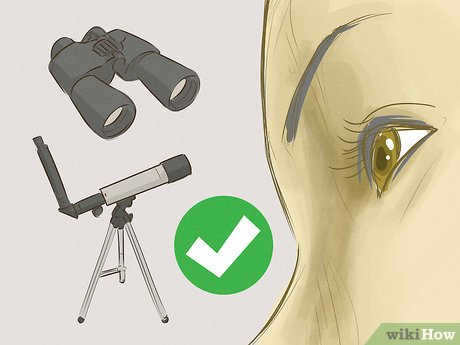
Bring a pair of binoculars to avoid eye strain. Using binoculars will enhance your ability to observe stars, planets, and constellations compared to relying solely on your naked eye. With binoculars, you won’t have to strain your eyes to see dim objects. [2] X Source of Information
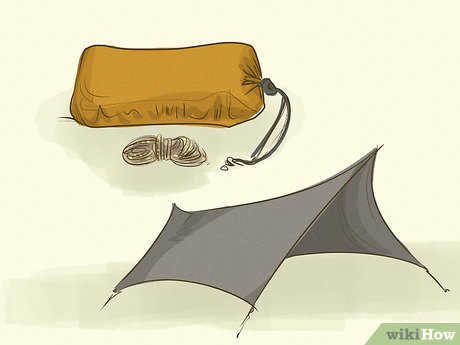
If you plan on observing the stars for a long period of time, it is advisable to bring along a tent or awning. In case of unexpected delays or unfavorable weather conditions, having a tent, awning, or tarp can provide you with the necessary shelter. It can also serve as a place to rest when you feel tired. Moreover, a tent or canopy can be a convenient storage space for food, beverages, chairs, and blankets. [3] X Source of information
Get ready for observing the stars
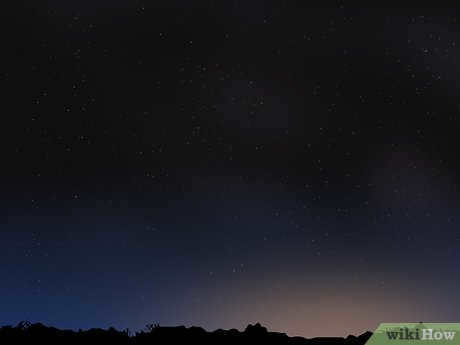
When observing the stars, it is best to choose a night with clear and dry weather conditions. This will allow you to see more stars and avoid getting wet in the rain or feeling overheated due to high humidity. [4] X Source of Information Additionally, a light breeze can help clear the air, but if there is a strong breeze, it may make you feel colder. In such cases, it is recommended to bring extra blankets and a sweater. [5] X Source of information
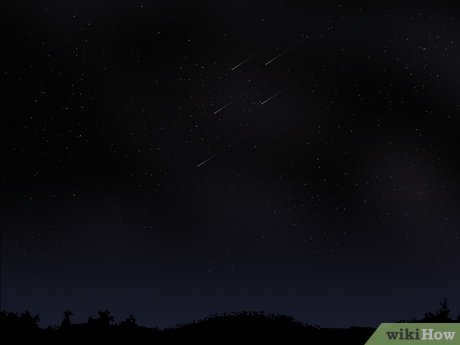
- During the summer months, there is an increased possibility of witnessing a breathtaking meteor shower. The Perseid meteor shower is an awe-inspiring phenomenon that can be observed in almost every part of the Northern Hemisphere. It occurs annually in the month of August. [7] X Source of information
- Various constellations, including Cassiopeia, the Big Dipper, and Cepheus, are visible all year round. [8] X Information Source

Escape the city to ensure an undisturbed stargazing experience. To fully appreciate the beauty of the stars, it is advisable to venture away from busy urban areas. These places tend to suffer from air pollution and excessive artificial lighting, which can hinder the visibility of the stars. Opt for a peaceful and secluded spot in the countryside instead. [9] X Source of information

- Make sure you have insect repellent with you, as failing to do so could result in spending the entire night swatting mosquitoes instead of enjoying the stars!
- Consider bringing a compact flashlight or a device that produces loud sounds to deter any animals that may approach your camping area.
Witness the celestial bodies
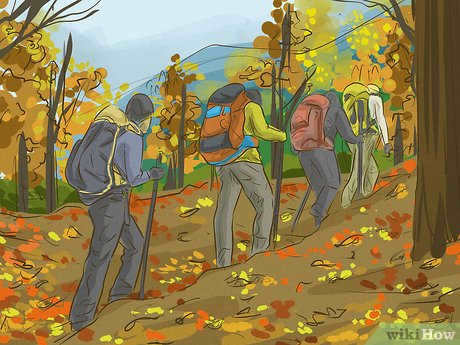
Bring a companion along. Having someone with you is a wise precaution in case you get lost or feel uncomfortable being by yourself in an unfamiliar place after dark. Additionally, having a companion will allow both of you to enjoy a better view of the stars.
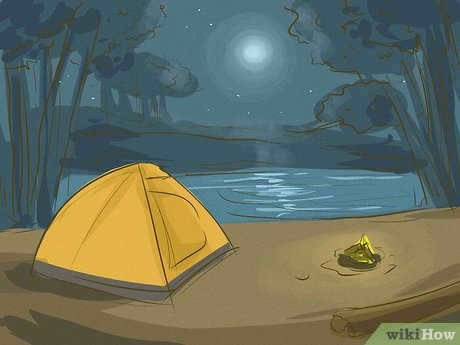
- If you prefer, you can simply recline on the earth to obtain a more comprehensive perspective of the celestial dome. Nevertheless, certain individuals may encounter difficulties in promptly rising from this posture.
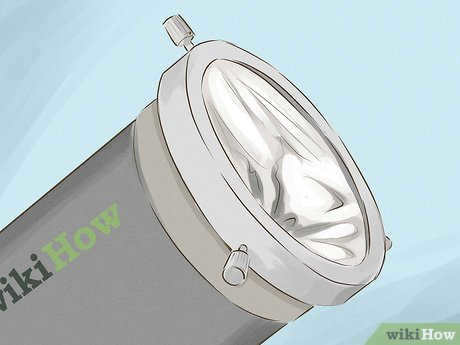
- If you want to adapt your eyes to the darkness faster, you can avoid turning bright white lights on and off, as this can delay the process. [13] X Source of information
- If you don’t want to spend money on an infrared flashlight, you can simply cover a regular flashlight with red cellophane sheeting. [14] X Information Source

Avoid putting excessive strain on your eyes. When observing the night sky, it is recommended to utilize the “peripheral vision technique” to enhance visibility of relatively faint stars. Rather than straining your eyes by fixing your gaze directly on the target, direct your sight away from the specific area you are attempting to observe. Peripheral vision is more responsive to changes in light and darkness, allowing you to perceive dim objects more effortlessly even in a darkened sky. [15] X Source of information

Enjoy!!! Stargazing can be an incredibly enjoyable activity, regardless of whether you’re just starting out or have been a passionate astronomer for years. Take a moment to lay back, grab a snack, engage in conversation with a companion, and truly appreciate the beauty of the night sky – it’s a rare opportunity that is often overlooked in our daily lives.
The holiday season presents the perfect opportunity to venture outside and unwind, not only during the daytime but also during the nighttime. One great way to do so is by indulging in some stargazing and marveling at the celestial wonders above.

To fully enjoy the beauty of the night sky, there is no need for any specialized knowledge or equipment – the stars can be observed with the naked eye. However, a little preparation can enhance the experience.
Escape to the countryside
The further you venture from populated areas, the more stars will reveal themselves in the night sky. Light pollution and polluted air in cities can obstruct the view, so it is advisable to travel to more remote locations. Avoid stopping near bodies of water, as the presence of wet air can further impede visibility. Prior to your stargazing outing, consult an online map of the city skyline to select the most suitable viewing spot.
Get exclusive software
Advanced technology enables you to utilize devices as your personal guides in exploring the celestial wonders. For desktop computers (and even mobile devices), it is highly recommended to install the Stellarium software, an exceptional virtual planetarium that presents a lifelike representation of the sky based on your current location. For smartphones, there are also exceptional applications available such as Star Walk 2 and Google Sky Map, which provide a remarkable opportunity for stargazers to navigate the night sky with precision, taking into consideration their exact position.
On the Moscow Planetarium’s website and in various media outlets, you can access the latest updates on the celestial bodies’ movements, meteor streams, and planetary parades. Utilizing this information will enable you to prepare and witness captivating celestial events. Consequently, your stargazing experience will be greatly enhanced, surpassing the mere act of gazing at the night sky without any knowledge or context.
Optics are not mandatory, but they are preferred
Observing the stars is possible without the aid of optics, enabling you to view the prominent celestial bodies. However, if you desire a more enhanced experience, binoculars (even those designed for tourists) or a telescope are necessary. Utilizing optics will provide you with the capability to observe and examine intricate details in the sky that would otherwise be invisible to the naked eye.
Be patient and find a comfortable seat
It won’t be possible to remain standing for a long time, so it’s important to have something to sit or even lie down on while enjoying the view of the stars. Furthermore, make sure to eliminate any nearby sources of light at least 15 minutes before you begin observing. This will allow your eyes to adjust to the darkness and prevent any extra light from interfering with your view. Lastly, keep in mind that stargazing is a time-consuming activity, so having patience is crucial.
TechInsider network edition
Founder of “Fashion Press” LLC: 119435, Moscow, Bolshoi Savvinsky per. 12, str. 6, floor 3, room II;
Editorial office address: 119435, Moscow, Bolshoi Savvinsky per. 12, p. 6, str. 6, floor 3, room II; Editorial office address: 119435, Moscow, Bolshoi Savvinsky per. 6, floor 3, room II;
Editor-in-Chief: Nikita Vasilenok
Editorial office e-mail address: [email protected]
Editorial office phone number: +7 (495) 252-09-99
Information product label: 16+
The network edition is registered by the Federal Service for Supervision in the Sphere of Communications, Information Technologies and Mass Media, registration number and date of decision on registration: series EL No. FS 77 – 84123 dated November 09, 2022.
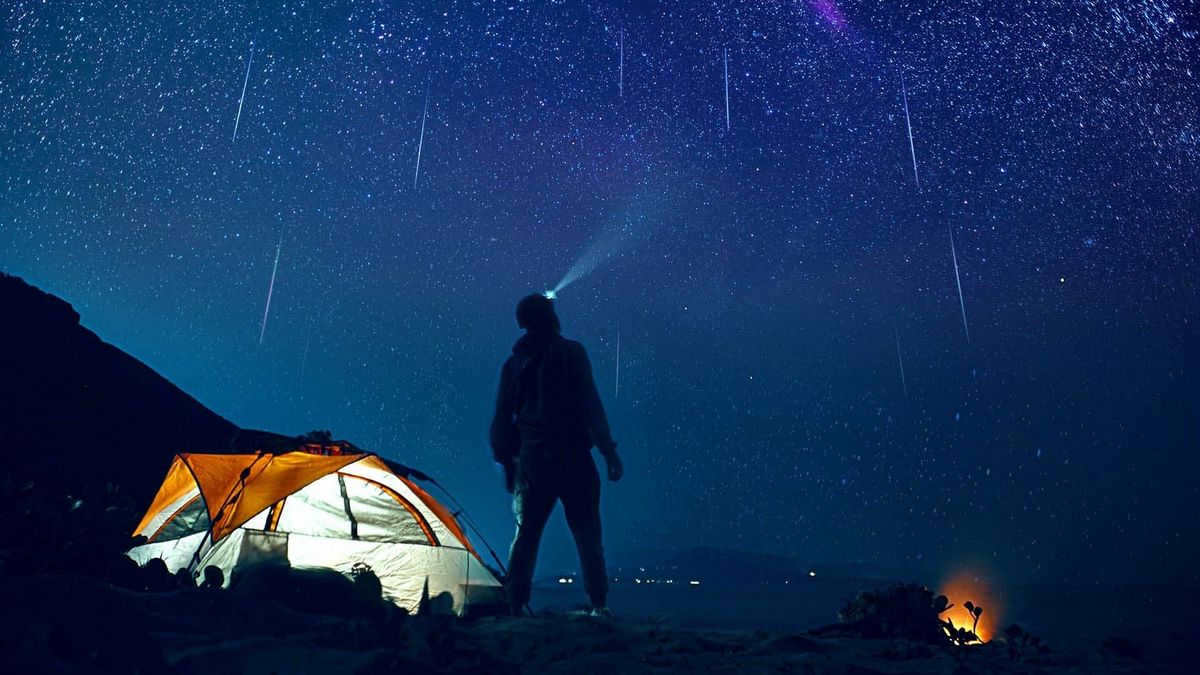
Witnessing the phenomenon of “falling stars” is a simple and exhilarating method to fully engage with the realm of astronomy. In the present piece, we will furnish you with valuable suggestions on how to adequately observe meteor showers, along with providing guidance on how to capture the beauty of a celestial shower through photography. Additionally, we propose partaking in our quiz pertaining to “falling stars.”
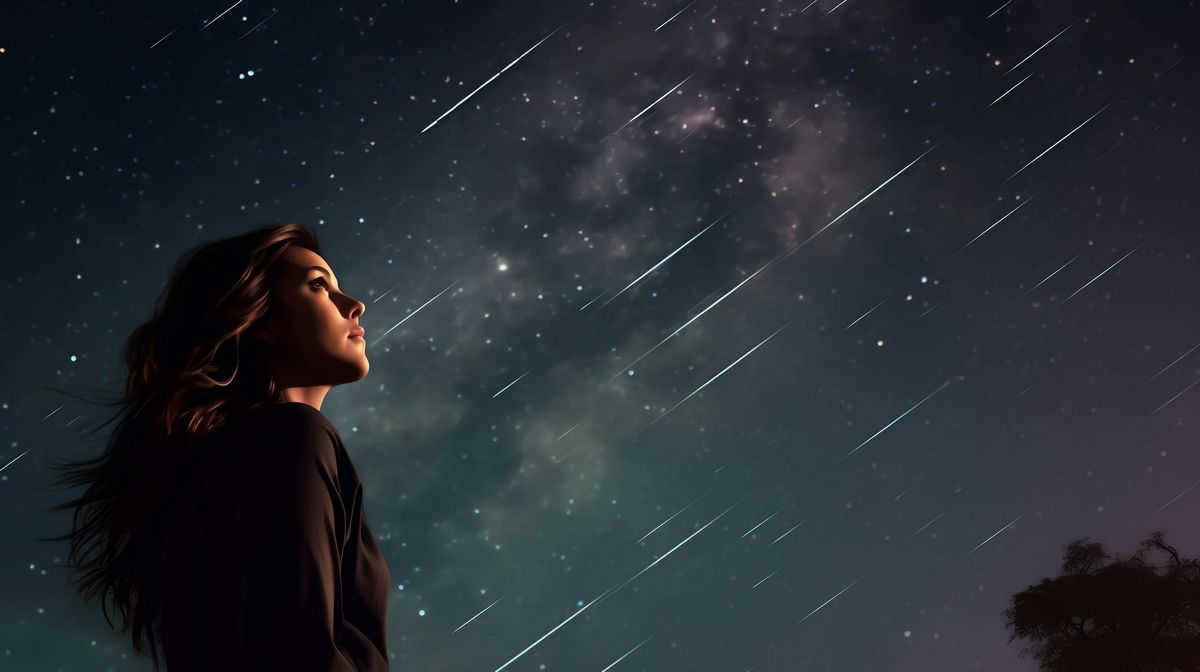
Put your knowledge of meteor streams to the test with our interactive quiz and discover helpful tips on how to observe shooting stars.
What causes the formation of meteor streams?
Meteor streams are typically formed when the Earth passes through a cloud of dust left behind by a comet. As these tiny particles enter the Earth’s atmosphere, they burn up and create a glowing trail in the sky known as a meteor.
While most meteor streams are associated with comets, some are linked to asteroids. For example, the Quadrantids meteor shower is associated with the asteroid 2003 EH1, while the Geminids meteor shower is connected to the asteroid 3200 Phaeton.
Incidentally, there are numerous individuals who fail to grasp the distinction between a meteor and a meteorite. Take a look at our questionnaire on the topic of “celestial debris”, and you will never mistake a meteor stream for a meteor shower (the latter of which can be fatal)!
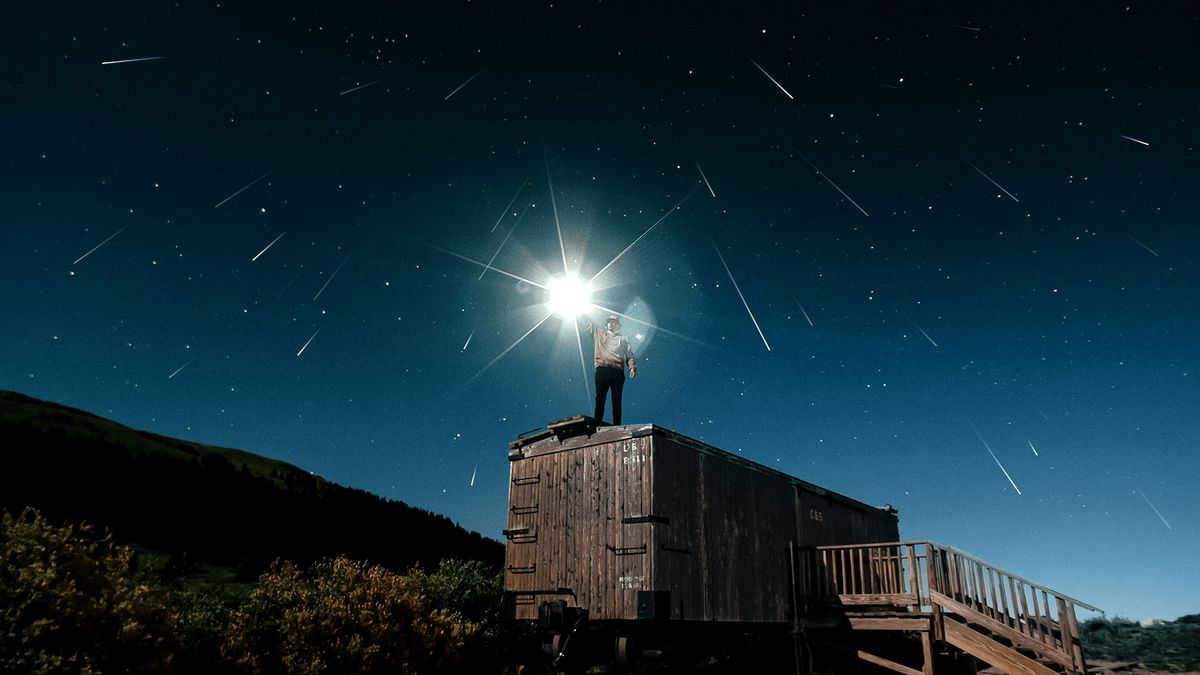

Are you able to differentiate between a meteor and a meteorite? How about a comet and an asteroid? Put your knowledge of the cosmos to the test with our quiz!
When is the next meteor shower?
If you’re interested in observing “shooting stars”, it’s important to know when the next meteor shower will occur. To find this information, you can utilize the meteor shower calendar on the Sky Tonight app. Simply click on the calendar icon located at the bottom of the screen and select the Meteors tab. A meteor calendar for the chosen month will be displayed. Periods of activity are represented by colored lines, and days with the highest meteor count are marked with dots. By navigating between different months, you can discover the optimal day for observation.
You can also visit the websites of the American Meteor Society or International Meteor Organization to find the meteor calendar.
Below, we have compiled a list of the top meteor showers in 2023 along with their respective activity dates. These meteor streams occur annually around the same time.
- April Lyrids (April 16-April 30)
- η-Aquariids (April 19-May 28)
- Southern δ-Aquariids (June 12 – August 23)
- Perseids (July 17 – August 26)
- Orionids (October 2 – November 7)
- Leonids (November 6 – November 30)
- Geminids (December 4 – December 20)
- Ursids (December 17-December 26)
- Quadrantids (December 28, 2023 – January 12, 2024)
For more details on these meteor streams, please refer to our article.
The visibility of a meteor stream depends on several factors, including cloud cover, time of maximum activity, radiant position, and moon phase. To increase your chances of successful observations, follow these four steps:
1. Monitor the weather forecast
Before planning your stargazing session, check the weather forecast to avoid heavy cloud cover or rainy conditions that might hinder visibility.
Discover the precise moment of the flux’s climax
It proves to be advantageous for every celestial object seeker to determine the exact moment when the meteor shower reaches its pinnacle, as this is the optimal time to witness the highest number of shooting stars. The Sky Tonight calendar provides the peak dates within the Meteors tab (indicated by dots). Additionally, the International Meteor Organization website offers information on the dates of utmost activity for meteor streams.
Discover the peak time of the radiant’s elevation
The radiant, which is the apparent source of meteors for an observer, is located on the celestial sphere. It is typically named after the constellation in which it is situated. One example is the Perseid meteor shower, which has its radiant in the constellation Perseus.
To spot meteors, you don’t necessarily need to gaze directly at the radiant. They can appear anywhere in the sky. Nonetheless, it is vital to be aware of the radiant’s position at any given moment, as the higher it is in the sky, the greater the number of meteors that can be seen.
If you want to locate the radiant of a meteor shower in the sky, you can utilize the Star Walk 2 or Sky Tonight application. Simply click on the magnifying glass symbol, enter the name of the meteor shower in the search field, and select the appropriate result from the search results. Afterward, direct your smartphone towards the sky and track the arrow to locate the radiant.
When observing celestial events, it is important to consider the impact of our natural satellite, the Moon. The more illuminated the lunar disk is, the more difficult it becomes to see meteors. Therefore, it is recommended to choose a day with minimal moonlight for optimal meteor observation.
To determine the current phase of the Moon, the Star Walk 2 app can be utilized. Simply tap on the menu icon located at the bottom right of the screen and navigate to the Sky Live section. Here, you will be able to view the upcoming lunar phase, indicated by the percentage of illumination displayed next to the phase name. By swiping your finger to the right, you can also preview how the lunar phases will change in the coming days.
Another useful app, the Sky Tonight, provides a visual calendar of lunar phases. Access the calendar icon at the bottom of the screen and proceed to the Moon tab. Within this tab, you will discover the lunar phases for each day of the selected month.
What are the essential items for meteor watching?
To enjoy the beauty of “shooting stars”, you don’t need any special equipment such as a telescope or binoculars. However, there are a few things that we suggest bringing along:
- A smartphone with a night sky observation app installed. This app will help you locate the radiant point. Remember to enable “Night Mode” to minimize the impact of the screen’s light on your eyes’ adaptation to darkness.
- Warm clothing. It is highly likely that you will have to wait for the meteors to appear in the sky, and during this time, you might get cold.
- A thermos with hot tea or coffee. Additionally, sandwiches would be a great addition!
- Bring a blanket or a folding chair – You will need something to sit on (or ideally lie down on, as it is more comfortable).
- Carry a flashlight with a red light. This type of flashlight will assist you in navigating in the dark while still preserving your “night vision”.
- Invite a group of friends. Firstly, it is more enjoyable to observe meteors with a group of friends! Secondly, you can divide and conquer by watching different parts of the sky, notifying your companions when meteors appear.
How can I capture meteor showers in photographs?
Capturing meteor showers in photographs requires a combination of skill and luck, as the appearance of shooting stars is unpredictable. However, the resulting images can be absolutely stunning! Here are some helpful tips on how to photograph meteor showers:
- Secure a tripod – A tripod is an essential tool for achieving clear and steady shots.
- Opt for a wide angle lens – Using a wide angle lens allows you to capture a larger portion of the sky in your frame, increasing your chances of capturing a meteor streak.
- Manually adjust the focus – Disable autofocus and direct your camera towards a bright star or planet. Zoom in on the celestial object and adjust the focus accordingly. Alternatively, if your lens permits, set the focus to infinity.
- Try pointing the lens towards the radiant of the stream – This could enhance your chances of capturing a shooting star.
- Adjust the aperture to 2.8 or below. – This will allow the maximum amount of light to enter the lens.
- Adjust the shutter speed to 15-30 seconds. You can experiment with different shutter speeds to achieve different effects. The slower the shutter speed, the longer the trails left in the photo due to the movement of celestial objects.
- Set the ISO to 1600 or higher. Increase the ISO value to its maximum, but be careful not to make the image too grainy.
If you want to learn how to effectively observe meteor streams, we have an informative infographic that provides all the necessary tips and includes memorable illustrations. Additionally, we recommend installing Sky Tonight and Star Walk 2, as these handy tools will assist you in preparing for your observations. If you found this article helpful, please feel free to share it with your friends on social media. Best of luck with your stargazing adventures!
For those who are passionate about astronomy, we are a group of amateur astronomers and instructor-guides from the “Mountain Portal” club. We are also engineers from Baumanka who have designed the StarBox camping telescope and developed a program for studying the starry sky through astronomical hikes in the Altai Mountains, specifically at Mount Belukha and Multinskiye lakes.
Hiking enthusiasts often marvel at the brilliance and proximity of the stars while trekking in the mountains, yearning to observe them up close and identify familiar constellations and planets in the celestial expanse. This desire has given rise to a new form of travel known as hiking astronomy.
During a hike, one can’t help but feel that the stars are within arm’s reach. It becomes a quest to locate recognizable constellations or simply bask in the mesmerizing sight of the radiant Milky Way. Hours can easily slip away in this pursuit, leaving you with a stiff neck as you retire for the night.
This article will guide you on how to delve deeper into the realm of astronomy, enabling you to identify constellations beyond the familiar Big Dipper and providing recommendations for equipment that will enhance your celestial exploration experience.
What is camping astronomy
Stargazing is an act of wonder as we peer into the enigma of the cosmos, exploring its depths and being filled with vitality. It is a joy that enables us to recuperate from a strenuous hike with a burdensome backpack. Even symptoms of altitude sickness dissipate when one beholds the incredible magnificence of the starry expanse above.
Hiking astronomy encompasses two primary domains – the visual observation of the celestial canopy and astrophotography, which allows for the capture of starlight and the emanation of constellations that elude the naked eye. Even mere gazing at the stars without any specialized equipment leaves an indelible impression, and observing them through optical devices enables an even deeper immersion into the ambiance of distant worlds.
The method for fully immersing oneself in the vast expanse of the night sky can be achieved through the following steps: exit the tent, grab a sleeping bag and foam pad, lay down and enclose oneself in the sleeping bag, leaving a small opening – a “porthole” (rest assured, you won’t feel the cold), and gaze up at the dark sky adorned with countless stars – a celestial display that can only be witnessed in the mountains. This immersive experience allows one to gain insights into the life and movement of the heavens above. The first time I tried this, I remained fixated on the stars for a remarkable two hours – an unforgettable encounter.
Pros and Cons of Hiking Astronomy
One of the key benefits of observing the night sky in the mountains is the reduced atmospheric interference, which leads to clearer views of celestial objects. Additionally, when hiking in the mountains:
- there are no artificial light sources that hinder star visibility;
- low-lying clouds and fog tend to stay at lower elevations, allowing for unobstructed views of the sky;
- the changeable weather often provides opportunities to witness a cloudless sky, whereas in flat regions, clouds can obscure the sky for extended periods of time.
What are the essentials for observing the sky?
Interestingly, witnessing the beauty of the celestial bodies appears to be a more achievable experience compared to, for instance, catching a glimpse of the aurora borealis. However, there are still several important factors to consider.
To effectively observe the luminous wonders of the sky, you will require:
- an enthusiastic and proactive individual who has familiarized themselves with a sky map and knows what to search for;
- dedicating more time to gazing up at the sky and stepping out of the tent, even after a long day of hiking. Just a single glance upwards can make you forget about dinner;
- setting aside the occasional day to rest and recharge, thus preventing excessive fatigue and allowing you to spend midnight beneath the vast sky;
- seizing every opportunity to view the celestial bodies, as the weather can undergo drastic changes.
Conditions for observing the night sky in the mountains
In order to observe the night sky effectively, it is crucial to have a good understanding of the location of the prominent celestial bodies. The Safonov brothers suggest that a great way to achieve this is by familiarizing oneself with the constellations and planets using planetarium programs or star maps. Additionally, if possible, it would be beneficial to have an amateur astronomer accompany you on your expedition. They can serve as your knowledgeable guide to the stars.
The optimal time for embarking on astronomy hikes in the mountains is undoubtedly during the summer season. The months of July, August, and early fall provide stable weather conditions and a sky that is exceptionally clear and pristine, making it impossible to ignore its beauty.
To conserve energy for nighttime stargazing, it’s convenient to incorporate day trips into your mountain trekking itinerary. Select a day with minimal physical activity: you can either stay at camp and relax by the fire or, if you leave your belongings at camp, embark on a short hike. This way, you’ll have the energy to enjoy the stars at night, assuming the weather permits.
Additionally, it’s worth noting that bright planets can be observed not only during the night but also in the morning sky. The dark night sky can sometimes cause the object’s contrast to be lost due to excessive brightness. On the other hand, the dawn sky provides an opportunity to see all the details clearly, allowing for a very distinct view of Jupiter in the morning.
Exploring the wonders of the sky on a hiking trip
The possibilities for observation are endless, depending on the method and tools you choose to use.
If you possess keen eyesight, the entire expanse of constellations is available to you. Simply familiarize yourself with a star map in advance to locate those twinkling stars in the night sky. This knowledge is also invaluable when using a telescope.
A telescope opens up a whole new world of details. With its assistance, you can marvel at:
- The intricacies of the moon’s topography – reason enough to invest in a telescope;
- Planets (including the magnificent rings of Saturn, the distinct bands on Jupiter, and its four brightest satellites, all visible through a portable telescope);
- Star systems are most often composed of two or three stars, each with different colors and sizes, which can be observed through a telescope.
- Comets, on the other hand, are rarely visible in the night sky.
- Globular star clusters resemble a vibrant and shimmering swarm of colors.
- Scattered star clusters are also a fascinating sight.
- Nebulae are luminous regions with undefined shapes.
- Galaxies and their distant satellites are millions of light years away.
However, traditional telescopes are bulky, expensive, and delicate. Few people would want to carry around a heavy (weighing 10 kg or more) and inconvenient optical device that also requires a significant financial investment.
StarBox hiking telescope
In order to create a telescope suitable for hiking in the mountains, we have taken into consideration the following requirements:
- The weight of the telescope, including all its components, must not exceed 3 kg.
- The telescope should be compact enough to fit inside a backpack alongside other items.
- Optics must be protected to withstand harsh hiking conditions.
- The telescope body should be shock-resistant and durable to survive being carried in a backpack.
- A large mirror diameter is included to allow for better viewing of details.
- The mount should be compact and user-friendly, providing smooth steering, quick pointing, and image stability.
The telescope is comprised of two sections that can be folded together to form a protective case, housing all of the optical elements. This design ensures that the components are shielded from any potential damage or moisture. The majority of the telescope’s parts are created using a 3D printer, allowing for flexibility and customization. Throughout the development process, each part of the telescope underwent a minimum of four revisions, resulting in a high level of quality and performance.
Thanks to the combination of a 150 mm mirror diameter and the absence of light pollution, the telescope provides incredibly detailed images that surpass what can be seen in the Moscow region, even with larger telescopes.
StarBox’s lightness and compactness make it easy to carry, even to the highest peaks. Elbrus has seen a barbell lifted, a Land Rover driven, horses arriving, and even a piano dragged up. So, we decided to bring our telescope on the ascent. Luckily, the weather was on our side and we were able to set it up right at the top, surprising all the hikers gathered nearby.
As an added bonus, a telescope in the mountains offers more than just stargazing. We were able to examine neighboring peaks in great detail, like the summit of Belukha. From our base camp, we could even spot and identify groups of climbers on the top of Elbrus, as well as assess the weather conditions at altitude.
Which mountains are better for observing the stars?
Unfortunately, not all mountain hikes offer the opportunity for stargazing. The most suitable mountains for astronomical observations are those that allow for extra time and energy, as well as provide a quiet and open area. The summer trekking routes in Altai are perfect for stargazing. One such route is the trek to the base of Belukha. Near Lake Akkem, the weather is usually calm, clear, and windless in July and August. You can set up a tent camp on the shore and explore the surrounding areas, such as Akkem grotto, the Yarlu valley, or the Seven Lakes. By leaving your belongings at the camp, you can enjoy the evening without the fatigue of carrying a heavy backpack. With a light load during the day, the evening becomes an ideal time for stargazing.
It’s an amazing and otherworldly destination. Here, you can lay in your sleeping bag and gaze at the stars for hours on end. The summer night temperature hovers around 5°C, allowing for extended star-gazing sessions. In Altai, for instance, you can witness the “Wild Duck” cluster – a mesmerizing collection of stars that resembles a flock of birds.
Another straightforward yet stunning Altai trail, ideal for stargazing, involves trekking to the Multinskiye lakes. The Multinskoye lakes form a diverse complex of water bodies, each with its own unique depth, color, and size. Some of these lakes have even been recognized as federally significant geological natural monuments.





